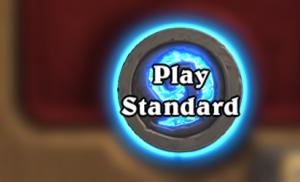The strangest inhabitants of the ocean. The most terrible inhabitants of the deep sea
Incredible Facts
Perhaps we should stop looking for aliens on other planets, since enough lives in the ocean amazing and strange life forms more like aliens.
4 Goblin Shark

The goblin shark is rarely seen on the surface, as it mostly inhabits at a depth of 270 to 1300 meters.
It is easily recognizable by its elongated and flattened muzzle with retractable jaws with teeth as sharp as nails. These sharks reach 3-4 meters in length, but can grow more than 6 meters.
5 Sea Spider

If you thought that there were no spiders in the ocean, you were greatly mistaken. but sea spiders have nothing to do with terrestrial spiders, despite the resemblance. These are not spiders and not even arachnids, but chelicerae - a subtype arthropods.
They live in the seas, especially in the Mediterranean and Caribbean, as well as in the North and South. Arctic oceans. There is more 1300 species of sea spiders, ranging in size from 1-10 mm to 90 cm.
6. Pompeian worm

Pompeii worms ( Alvinella pompejana) live in very hot water near hydrothermal springs Pacific Ocean and may withstand extreme temperature and pressure.
7. Drop fish

Drop fish ( Psychrolutes marcidus) although it is considered the ugliest creature in the world, looks like a perfectly normal fish, being in its usual environment at a depth of 600-1200 meters.
At this depth, the pressure is 120 times higher than at the surface. Unlike other fish, it does not have a swim bladder, skeleton or muscles, which allows it to swim at depth. If you raise it to the surface, it acquires drooping and dull look.
Sea creatures
8 Bobbit Polychaete Worm

Purple Australian polychaete worm, also known as the Bobbit worm, can grow to 3 meters long.
He hunts his prey in the most diabolical way, burrowing into the seabed, leaving a small part of his body on the surface and waiting for the victim. Using its antennae, the worm senses passing prey, quickly captures it with its strong muscular throat, and splits the fish in two.
9. Jellyfish "flower hat"

These jellyfish, with beautiful multi-colored tentacles emanating from a translucent umbrella, feed on small fish and sometimes each other.
They can increase or decrease in size dependent on food supplies.
10. Seahorse-rag-picker

These slow moving fish are related to seahorses. They rely mainly on their seaweed-like appendages, thanks to which the rag-pickers camouflage and protect themselves from predators.
11. Siphonophores

Siphonophores are animal colonies, consisting of individual representatives called zooids, connected by a common trunk. Such a colony can reach several meters in length.
12. Crown jellyfish

This atoll jellyfish or crown jellyfish is very similar to a UFO, because, like most jellyfish, it does not have a digestive, respiratory, circulatory and central nervous system.
She lives deep 1000 - 4000 meters where no sunlight can reach. Being frightened, this jellyfish "connects" bioluminescent blue lights that spin like flashing lights on a police car.
13. Pike blenny

These fish usually hide inside shells on seabed. These are small (up to 30 cm), but ferocious fish with a large mouth and aggressive behavior.
When two pike blennies fighting for territory, they press their widened mouths against each other, as if in a kiss. This helps them determine who is bigger.
14. Glass squid

There is about 60 types of glass squid or crachniids. Most of them, as the name implies, are transparent, which helps them to disguise themselves.
15. Pteropods

Winged mollusks are small sea snails, which swim in the water on two legs in the form of wings. They are born males but become females when they reach a large size.
16. Sea cucumber

These floating deep sea cucumbers are transparent so you can see their digestive system.
deep sea dwellers
17. Squid-worm

Scientists first discovered this deep-sea creature in 2007. It was nicknamed the worm squid because of 10 tentacles on the head, each of which is longer than the entire body. He uses them to collect food.
18. Lobster formidable claws

This species lobster Dinochelus ausubeli, which means "terrible pincers", was discovered at a depth 300 meters in the Philippines in 2007. It reaches a length of only 3 cm, and its toothy claws are the only frightening feature.
19. Venus flytrap anemone

This sea anemone Actinoscyphia aurelia, was named after venus flytrap plants because of the similar shape and way of eating. She folds her disc in half, trapping food and digesting it with her mouth located in the center of the disc.
The selection presents a wide variety of living creatures that inhabit the depths of the sea: strange and unusual, creepy and frightening, colorful and incredibly cute. Many of them have been opened recently.
Marine "flycatcher"
These predator shells live in deep-sea canyons near California. According to the method of hunting, they are somewhat similar to carnivorous plants, they are fixed at the bottom and calmly wait until the unsuspecting prey itself swims into the gaping mouth. This way of eating does not allow them to be too picky in food.
shark walker
Off the coast of Halmahera Island (Indonesia) was discovered the new kind a shark that "walked" along the bottom in search of prey, just like a lizard. unusual fish a relative of the bamboo shark, grows up to 70 cm in length. She hunts mainly at night, and small fish and invertebrates become her dinner. And by the way, this is far from the only fish that “walks” along the seabed. Representatives of the family of bats and lungfish are able to walk on fins.
Christmas tree
lovers marine fauna and divers call the colorful inhabitants of the Pacific and indian ocean. In fact, it is a tubular polychaete sea worm, his Latin names– Spirobranchus giganteus.

No fish, no...
This is a mollusc and it does not fit at all into the idea of how gastropods should actually look like. Tethys (Tethys fimbria) are quite large, about 30 cm long, their almost shapeless translucent body is decorated with bright processes irregular shape. Tethys are widespread in the waters of the Atlantic and Pacific Oceans, where they slowly glide along the seabed.

Pugaporcinus
If there was a competition for the title of "weirdest worm", pugaporcinus would easily bypass all the other participants. These unusual inhabitants ocean depths better known in narrow circles as "flying buttocks". Their existence was only recently known, in 2007. The creature is no larger than a hazelnut.

tripod fish
Bright hallmark This fish is long thin pectoral fins, with which it rests on the seabed and stands in anticipation of prey. Not surprisingly, the name of this fish is Brachypterois grallator, or simply tripod fish. Scientists still know little about them, since the creatures live at a depth of 1000 to 4500 meters. The length of the fish is about 30-35 cm.
Thaumaticht axel
These representatives of the anglerfish detachment were discovered not so long ago, but are named after the Danish prince Christian Axel, who died in the middle of the last century. Axel is considered one of the strangest and most unattractive creatures, although there are not so many sympathies that live at a depth of 3500 meters (remember at least the star of the Internet - a drop fish). In length, they reach 50 cm, or rather, scientists managed to meet fish of this size. In the creature's mouth is a special gland with luminous bacteria. To start the hunt, the fish simply open their mouths and potential victims will float to the light source.

moonfish
bat
A fish from the family of ray-finned detachment of the very ugly anglerfish. Widely distributed in warm tropical and subtropical seas, except for the Mediterranean. Lives at depths up to 100 meters.

sea spiders
These harmless creatures live in almost all waters with normal salinity. Like ordinary spiders, their body is relatively small from 1 to 7 cm, but the leg span can be up to 50 cm. There are about 1000 species of sea spiders.

mantis shrimp
This colorful creature has unique vision and moves at incredible speed, but most of the time the true predator hides in coral reefs at a depth of 2 to 70 meters. Sometimes it is called a fighting cancer or even a terrorist cancer. Officially, he is a mantis shrimp. Why, it becomes clear at a glance. The segments of the mandibles of these crayfish are bent at an angle, like in praying mantises. Just like insects, crayfish are able to instantly throw a limb forward, much faster than a person blinks.

giant underwater pipe
Pyrosomes or fireballs are tiny sea creatures somewhat similar to jellyfish, they are only a few millimeters long, but when combined into a giant colony, they create huge translucent pipes up to several meters long. And it is also worth remembering that they are capable of bioluminescence. Imagine a huge underwater pipe glowing in the night - a breathtaking sight.

Our Earth is 70% water, and most of these vast water (including underwater) expanses remain poorly explored. Therefore, it is not at all surprising that the most amazing and strange representatives animal world live in the depths of the sea. Today in our article we will talk about the most incredible deep sea fish Oh Mariana Trench and other ocean depths. Many of these fish were discovered relatively recently, and many of them amaze us, people, with their incredible and even fantastic appearance, structural features, habits and way of life.
Bassogigas - the deepest sea fish in the world
So, get acquainted, bassogigas - a fish that holds the absolute record for the deepest habitat. For the first time, bassogigas was caught at the bottom of a trench near Puerto Rico at a depth of 8 km (!) from the John Eliot research ship.

Bassogigas.
As you can see, in appearance, our deep-sea champion differs little from ordinary fish, although in fact, despite the relatively typical appearance its habits and way of life are still little studied by scientific zoologists, because it is a very difficult task to conduct research at such a great depth.
drop fish
But already our next hero can hardly be reproached for being “ordinary”, get acquainted - a drop fish, which, in our opinion, has the strangest and most fantastic appearance.

Like an alien from outer space, right? A drop fish lives on the deep ocean floor near Australia and Tasmania. The size of an adult representative of the species is no more than 30 cm. In front of it is a process resembling our nose, and on the sides, respectively, there are two eyes. A drop fish does not have developed muscles and resembles something in its way of life - it slowly swims with its mouth open in anticipation that the prey, and these are usually small invertebrates, will itself be nearby. After that, the drop fish swallows the prey. She herself is inedible and, moreover, is on the verge of extinction.
And here is our next hero - a sea bat, which in its appearance does not even look like a fish.

But, nevertheless, he is still a fish, although he cannot swim. The bat moves along the seabed, pushing off with its fins, so similar to legs. The bat lives in the warm deep waters of the oceans. The largest representatives of the species reach 50 cm in length. Bats are predators and feed on various small fish, but since they cannot swim, they lure their prey with a special bulb growing directly from their heads. This bulb has a specific smell that attracts fish, as well as worms and crustaceans (they are also eaten by our hero), while the bat itself patiently sits in ambush and, as soon as potential prey is nearby, it sharply grabs it.
Anglerfish - deep sea fish with a flashlight
The deep-sea anglerfish, living, including in the depths of the famous Mariana Trench, is especially remarkable for its appearance, due to the presence of a real flashlight fishing rod on its head (hence its name).

The angler's flashlight rod is not only for beauty, but also serves the most practical purposes, with its help our hero also lures prey - various small fish, although due to his not small appetite and the presence of sharp teeth, the angler does not hesitate to attack and on larger representatives of the fish kingdom. Interesting fact: anglers themselves often become victims of their special gluttony, as they grab big fish due to the peculiarities of the structure of the teeth, he can no longer release prey, as a result of which he himself chokes and dies.
But back to his amazing biological flashlight, why does it glow? In fact, light is provided by special luminous bacteria that live in close symbiosis with the anglerfish.
Apart from its main name deep sea anglerfish has others: sea Devil», « angler”, because in its appearance, and habits, it can be safely attributed to deep-sea monster fish.

The barrel-eye perhaps has the most unusual structure among deep-sea fish: transparent head through which he can see with his tubular eyes.

Although the fish was first discovered by scientists back in 1939, it still remains poorly understood. It lives in the Bering Sea, near the western coast of the USA and Canada, as well as near the coast of northern Japan.
giant amoeba
American oceanologists 6 years ago discovered living creatures on record depth 10 km. - giant amoeba. True, they no longer belong to fish, so bassogigas still ranks among fish, but it is these giant amoebas that hold the absolute record among living creatures that live at the greatest depth - the bottom of the Mariana Trench, the deepest known on Earth. These amoebae were discovered with the help of a special deep-sea camera, and research on their life continues to this day.

Deep sea fish video
And in addition to our article, we invite you to look curious video pro 10 incredible creatures Mariana Trench.
26.02.2016
The depths of the seas and oceans, where sunlight does not penetrate, are home to many amazing creatures. It is believed that 98 percent of all aquatic animals live at the very bottom or slightly above. At present, only a small part of the vast deep sea world which might be for the best. Many amazing and terrible creatures have been discovered, but even more of them are hidden under the water column. And we have no idea what terrible secrets the depths hold. Look at the photographs of eleven creatures that are the most prominent representatives underwater kingdom.
1. Saber-toothed fish
Saber-toothed fish - real sea monster. It lives in the tropical waters of the oceans at a depth of about five kilometers. Although its length is on average 18 centimeters, the fish still looks terrifying. This creature got its name because of the huge teeth. Despite the threatening appearance, the saber-toothed fish is not dangerous to humans. In any case, not a single case of attack was officially registered. This deep-sea predator feeds on small fish and squid.
2. Goblin shark
The goblin shark is also known as the goblin shark. This one is very rare view considered a living fossil - it appeared in the era of dinosaurs, 125 million years ago. Shark doesn't like sunlight and usually does not rise above 100 meters from the surface of the water. Average length this deep sea dweller- about 4 meters. Many people, when they see this monster, think that the animal is crippled. But this is not so - this is just the specific "appearance" of the shark.
3 Giant Isopod
These crustaceans resemble multiply enlarged wood lice. The largest of the caught isopods reached a length of 76 centimeters. These animals live at the very bottom under the water column from 170 meters to 2 kilometers. giant isopods are considered predators, but usually they feed on dead creatures. Although they do not disdain fish, if they manage to catch it. When threatened, isopods curl up into a ball, just like their terrestrial relatives.
4. Catfish
Catfish usually grow up to two and a half meters in length and can weigh about 30 kilograms. Fish live at depths from 300 to 1700 meters. Most interesting feature catfish are their puffy "faces" with plump lips. The frightening appearance of the fish is given by sharp, protruding teeth.
5. Big Mouth
The big mouth is also called the "pelican fish" - it's immediately clear why. It lives deep under the surface of the ocean - from 500 meters to 3 kilometers. Bolsherot has a snake body (up to 80 centimeters in length) and a frightening huge mouth. The fish is capable of swallowing prey that is much larger than the large mouth. The stomach is also adapted to such extreme nutrition - it stretches to fantastic sizes.
6 Japanese Spider Crab
Japanese spider crabs live along the coast of Japan at depths of 200 to 900 meters. The body of the crab is relatively small - up to 45 centimeters, but the span of the front pair of legs can reach 4 meters. The weight of these monsters reaches twenty kilograms. Despite the ominous appearance, giant spider crabs, as a rule, have a peaceful character. In Japan, they are caught and eaten as a favorite delicacy.
7. Johnson Melanocete
Johnson's Melanocet is perhaps the most feared creature of all hiding under the water column. It lives at a depth of 4.5 kilometers, although it can rise to a level of 100 meters from the surface. Melacenot females grow up to 18 centimeters in length, while males do not differ large size. In its shape, the fish resembles a drop with mouthful dagger-like teeth. Its head is equipped with processes with luminous photophores - in this way the predator lures its victims.
8 Frilled Shark
Frilled sharks trace their lineage back to prehistoric times. All of their closest relatives have long since died out. Sharks of this species have a long and thin body. They can reach a length of two meters. The worst thing about a shark is its teeth (about 300 pieces), which are arranged in rows (up to 29 rows on the lower and the same number on the upper jaw). Frilled sharks live at a depth of about one and a half thousand meters.
9 Giant Squid
Giant squids, due to their way of life, are almost elusive for fixing on a photo or video camera. They live deep under water and only occasionally rise to the surface. These giants grow up to 17 meters in length. Some people say that they have seen specimens over twenty meters long on the high seas. But there is no documentary evidence for this. To date, no giant squid have been caught. Sometimes found washed ashore already dead animals.
10. Hell Vampire
Hellish vampires live in tropical and temperate ocean waters at a depth of 400 meters to a kilometer. Representatives of this family have the usual head shape for squids, but the tentacles are connected by membranes like a funnel. Inside the funnel are spikes and suckers with which infernal vampires paralyze and hold their victims. Although these animals are called vampire squids, they actually belong to a separate family - Vampyroteuthidae.
11. Howlios
Howliods have huge mouths full of fangs. The teeth are so large that they do not fit in the mouth. As you may have guessed, these fish are predators. When howliods swallow their prey, their jaw moves forward and down, and the head can be tilted back. The size of the fish is not too large, they grow up to an average of 35 centimeters. Typically, howliods live at a depth of 500 meters to a kilometer, although they are able to dive to much great depth- up to 4 kilometers.
The oceans are home to several million species of amazing sea creatures. Given this vast biodiversity, it is not surprising that these Marine life represented in all possible forms, colors and sizes. Some of them, especially deep sea dwellers, look scary and disgusting, but the appearance of others is simply breathtaking. Today we will take a closer look.
1. Mandarin Fish(Synchiropus splendidus)
Found in the tropical waters of the Western Pacific, mandarin duck is a small coral fish up to 6 cm long, known for its strange shape and beautiful intense coloration.
(Cerianthus membranaceus)
 photo: https://www.flickr.com/photos/oceanaeurope/
photo: https://www.flickr.com/photos/oceanaeurope/
Found in various locations in subtropical waters, the trumpet anemone comes in many different fluorescent colors and color combinations, making it a popular aquarium animal.
 photo: Philippe Portallier
photo: Philippe Portallier
3 Flamingo Tongue(Cyphoma gibbosa)

Native to various Caribbean and Atlantic coral reefs, this colorful snail feeds on coral polyps.
4. Blue surgeon(Paracanthurus hepatus)
 photo: Aaron Gilcrease
photo: Aaron Gilcrease
The fish is famous for its sharp spikes on its tail, which are said to resemble a surgeon's scalpels.
5. Mantis shrimp(Stomatopoda)
 photo: https://www.flickr.com/photos/jennofarc/
photo: https://www.flickr.com/photos/jennofarc/
The waters of the Indian and Pacific oceans became the home for mantis shrimp. These are some of the most fascinating and colorful creatures in the sea. These beautiful crustaceans have the most complex eyes in the world.
6. French angel(Pomacanthus paru)
 photo: Paul Asman
photo: Paul Asman
Native to the western Atlantic Ocean, as well as the Gulf of Mexico and the Caribbean, the French angel is an amazing tropical fish with a dark color that is perfectly complemented by yellow stripes.
7. Seahorse-rag-picker(Phycodurus eques)
 photo: Dmytro Kochetov
photo: Dmytro Kochetov
This seahorse found in the waters of Australia is one of the most unusual and fascinating sea creatures. Reaches up to 20 cm in length. He also falls into 25 most amazing sea creatures.
8 Sea Spiders(Pantopoda)

Completely unrelated to what we are used to common spiders, sea spiders are much simpler in form and function, but almost as common as their terrestrial namesakes. With over 1,300 species, these tiny marine arthropods can be found in most parts of the world.
9. Medusa flower hat(Olindias formosa)
 photo: Josh More
photo: Josh More
A very rare species that belongs to the Hydrozoa class, while real jellyfish belong to the Scyphozoa class. The flower cap can be found in the Western Pacific at southern japan, and has a painful sting.
10 Harlequin Crab(Lissocarcinus laevis)
 photo: Rene Cazalens
photo: Rene Cazalens
Among 25 most amazing sea creatures a stunning harlequin crab that is found alongside sea anemones and pipe anemones, close to coral coastlines and rocky reefs.
11. Apogon tulle(Pterapogon kauderni)

Wonderful tropical fish with silver coloration and vertical black stripes. Endangered species, which is found only in a relatively small area around the island of Banggai in Indonesia.
(Aetobatus narinari)
 photo: Xabier Mina
photo: Xabier Mina
Reaching a width of up to 3 m, spotted bracken is an active swimmer and predator known to feed on invertebrates and small fish.
13. Clownfish(Amphiprion percula)
 photo: Jun Ushiki
photo: Jun Ushiki
Bright Orange color with three characteristic white stripes of clownfish, it is one of the most recognizable and popular among all reef dwellers. The fish reaches approximately 11 cm in length.
14. Harlequin Shrimp(Hymenocera picta)
 photo: https://www.flickr.com/photos/luko/
photo: https://www.flickr.com/photos/luko/
Like many others bright views in 25 most amazing sea creatures, the harlequin shrimp is a popular aquarium inhabitant. In this species white body with big spots. Males are slightly smaller than females.
15. Blue Dragon(Glaucus atlanticus)

Also known as blue glaucus and - poisonous shellfish. With a length of up to 3 cm, this curious animal is found in all temperate and tropical waters.
16. Discus fish(Symphysodon)
 photo: Vera Le Bail
photo: Vera Le Bail
Native to the Amazon River discus fish is one of the most beautiful tropical fish in the world. Because of his distinctive shape and bright coloring has the name "king of the aquarium".
17. Venus anemone - sea anemone(Actinoscyphia aurelia)
 photo: https://commons.wikimedia.org
photo: https://commons.wikimedia.org
Venus anemone, named after the plant venus flytrap due to resemblance and power mechanism. This sea anemone is a major deep sea creature, which feeds by trapping food in its "trap mouth".
18. Royal starfish(Astropectenarticulatus)

One of the most remarkable representatives of the genus, royal starfish ‒ starfish, which most often lives on the middle continental shelf about 20-30 m in the western Atlantic. It is a carnivore that feeds on shellfish.
19. ClamBerghia Coerulescens
 photo: Rodrigo Pascual
photo: Rodrigo Pascual
A species of sea slug that can be found in the Central and Western Mediterranean, as well as in the North Atlantic Ocean. This stunningly colorful creature reaches up to 7 cm in length.
20. Zebra Lionfish(Pterois volitans)

One of the most iconic tropical fish, a popular delicacy in some parts of the world, but much more valued as an aquarium inhabitant.
21. Long-snouted European seahorse(Hippocampus hippocampus)

endemic mediterranean sea and some parts of the North Atlantic, the long-snouted European seahorse is a medium-sized species, up to 13 cm high, that lives in shallow muddy waters, in estuaries or in seagrass meadows. Disappearing view.
22. Painted triggerfish, or prickly rinekant(Rhinecanthus aculeatus)
 photo: Joachim S. Müller
photo: Joachim S. Müller
25 most amazing sea creatures represents a wonderful tropical fish found on reefs in the Indo-Pacific region. The painted triggerfish feeds mainly on reef and algae. The diet of fish contains small crustaceans, worms, sea urchins and snails.
23. Green sea turtle(Chelónia mýdas)

The green turtle is a large, heavy sea turtle with a broad, smooth shell. Weighing up to 320 kg, the green sea turtle is one of the largest sea turtles in the world.
24. Clam Phyllidia Babai
 photo: Iain Fraser
photo: Iain Fraser
A species of nudibranch that is found in several areas of the Pacific Ocean such as Papua New Guinea, South Korea and Australia.
25. Crown of thorns, or acanthaster(Acanthaster planci)
 photo: Joey Jojo
photo: Joey Jojo
A starfish that is found in the Indo-Pacific region. Despite its beautiful appearance, the crown of thorns is often considered a pest because a large number of these creatures pose a significant threat coral reefs especially the Great Barrier Reef.
If you find an error, please highlight a piece of text and click Ctrl+Enter.













